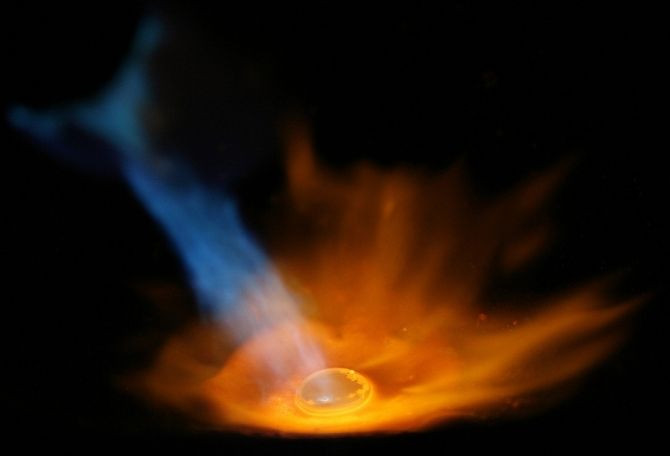Mercury Vapor Goes From Atmosphere Into Food Chain: Study

While humans pump thousands of tons of vapor from the metallic element mercury into the atmosphere each year, new research shows that the upper troposphere and lower stratosphere work to transform elemental mercury into oxidized mercury, which can easily be deposited into aquatic ecosystems and ultimately enter the food chain.
"The upper atmosphere is acting as a chemical reactor to make the mercury more able to be deposited to ecosystems," said Seth Lyman, who did the work as a research assistant professor in science and technology at the University of Washington Bothell.
The study results marked the first time that the two mercury forms were measured together in a way that showed that elemental mercury is transformed into oxidized mercury, Lyman said.
The authors explained that it is not known how the oxidation takes place but once it does take place, the oxidized mercury is quickly removed from the atmosphere, mostly through precipitation or air moving to the surface.
The oxidized mercury is then transformed into methyl mercury, a form that can be taken into the food chain and eventually can result in mercury-contaminated fish.
Lyman said that some areas, such as the Southwest United States, appear to have specific climate conditions that allow them to receive more oxidized mercury from the upper atmosphere than other areas.
Where the mercury settles to the surface can be thousands of miles from where it was emitted, he said.
He gave an example and said that mercury from coal burning in Asia could rise into the atmosphere and circle the globe several times before it is oxidized, then could come to the surface anywhere.
Understanding where it is oxidized and deposited would help efforts to predict ecosystem impacts of mercury emissions, he said.
"Mercury emitted on the other side of the globe could be deposited right at our back door, depending on where and how it is transported, chemically transformed and deposited."
The full study can be found in the journal Nature Geoscience.
Published by Medicaldaily.com



























